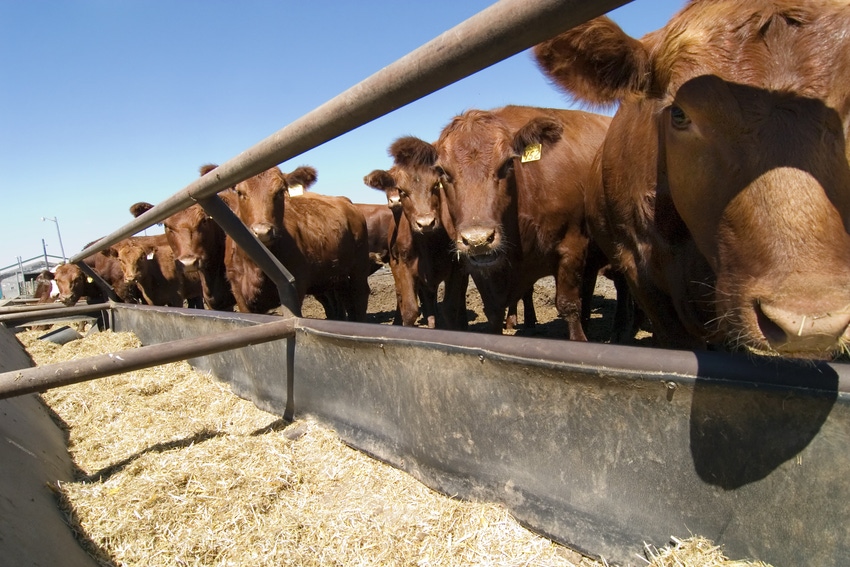China makes significant changes on beef traceability, hormones and age restrictions.

It was a historic day for the U.S., but it was an especially great day for American beef producers, National Cattlemen’s Beef Assn. (NCBA) president Jennifer Houston said during a conference call after the U.S. and China signed a phase one trade agreement Wednesday.
The U.S. beef sector had just regained access to China in 2017, after being out of the market since 2003 due to a case of bovine spongiform encephalopathy (BSE).
Houston said the U.S. still faces significant non-science-based, non-tariff trade barriers, but the latest deal will help “get rid of a lot of those and allow us to sell the some high-quality U.S. beef that we enjoy to Chinese consumers.”
She continued, “We know that when they get a taste of this beef, this market is absolutely going to explode and be such a positive event for America’s beef producers.”
Kent Bacus, NCBA senior director of international trade and market access, called it a “truly momentous day” for the U.S. beef sector and NCBA.
As part of the deal, China is lifting a 30-month BSE-related age restriction. Additionally, it will now recognize the U.S. traceability system and do away with its former bookend traceability requirement, which required birth origin and slaughter origin to be known. Now, the traceback will go back just to the point of slaughter through an Food Safety & Inspection Service-approved facility, which is similar to what the U.S. does for many other countries, Bacus explained.
“Those extra things we had to do for the China market we will no longer need to do,” he added.
Beef from cattle implanted with zeranol and trenbolone acetate implants will also be allowed into China, as well as beef from heifers fed melengestrol acetate.
“That is huge, because these are commonly used technologies that we’ve used for decades,” Bacus said.
Further, China has agreed to conduct a risk analysis on ractopamine, a Food & Drug Administration-approved beta-antagonist used in a majority of U.S. feedyards.
“We see a lot of progress on some of these major non-tariff trade barriers,” Bacus said, adding that this will allow the U.S. beef industry to tap into a market that wants its products. “They want beef. What sets our product apart from many other countries is that our beef is a higher-quality, grain-finished beef.”
Most of what China is importing now is lower-quality, grass-fed beef, which he said is “nothing like what we produce here in the United States.”
“I think we’re going to see a significant growth in our overall global exports,” Bacus said. “The Chinese market is going to be significant in the long term, but we have lot of opportunities with Japan, we have a lot of opportunities with Korea. We have a tremendous opportunity throughout Asia; this is just another addition to that.”
He acknowledged, however, “I don’t think we can ignore the fact that this is one-fifth of the world’s population, with a middle class bigger than the entire U.S. population — that’s hungry for protein. They’re hungry for beef.”
Once supply chains are developed and the U.S. is able to market to those consumers, “I think China will easily be a top-three market for us in the near future,” Bacus said.
Houston added that even though work on beta-agonists continues, the changes on hormones, traceability and age restrictions were “some huge wins.”
A former analysis by the U.S. Meat Export Federation estimated that if all restrictions were lifted, China would be a $4 billion market for the U.S. within five years.
“As we roll this out, I think that’s a conservative estimate,” Bacus said. “When those calculations were taken, that was before the African swine fever outbreak [in China], and that was before this massive culling of Chinese pork production and all of these imports -- basically a vacuum of protein demand in China."
Bacus said it is very difficult to put a solid number on China's statistics right now, but NCBA will be trying to quantify that in the near future.
Regarding the phase one deal, Bacus said some things will be implemented immediately, while others will require some work, “but there is a commitment to move this forward as quickly as possible.”
Implementation will be NCBA's main focus moving forward, but work regarding beta-agonists will continue, Bacus added.
Market recap
February live cattle futures were mostly lower this week, closing lower Monday at $126.55/cwt. and Thursday at $126.125/cwt.
March feeder cattle futures were lower this week, closing lower Monday at $145.85/cwt. and Thursday at $144.825/cwt.
For the beef cutout prices, Choice and Select closed higher Thursday at $212.90/cwt. and $211.47/cwt., respectively.
February lean hog futures contracts started the week lower but posted gains as the U.S. and China finalized their phase one deal this week. Contracts closed lower Monday at $65.90/cwt. and rose to a higher close Wednesday at $67.875/cwt. Despite the gains, contracts fell Thursday to close at $66.875/cwt.
The pork cutout was mostly higher, with the wholesale pork cutout closing at $75.45/cwt. Loins and hams were higher at $67.94/cwt. and $71.66/cwt., respectively. Bellies were sharply higher at $102.65/cwt.
Hogs delivered to the western Corn Belt closed at $51.35/cwt. on Thursday.
The U.S. Department of Agriculture reported the Eastern Region whole broiler/fryer weighted average price on Jan. 10 at 92.56 cents/lb.
According to USDA, egg prices were steady, with a steady undertone. Offerings were light to moderate. Supplies were moderate to instances heavy. Demand was light to fairly good.
Large eggs delivered to the Northeast were lower at 67-71 cents/doz. Prices in the Southeast and Midwest were lower at 71-74 cents/doz. and 59-62 cents/doz. Large eggs delivered to California were $1.40/doz.
For turkeys, USDA said the market was steady to firm, and demand was light to moderate. The price range for hens and toms was unchanged at 91 cents to $1.00/lb.
About the Author(s)
You May Also Like



.png?width=300&auto=webp&quality=80&disable=upscale)

